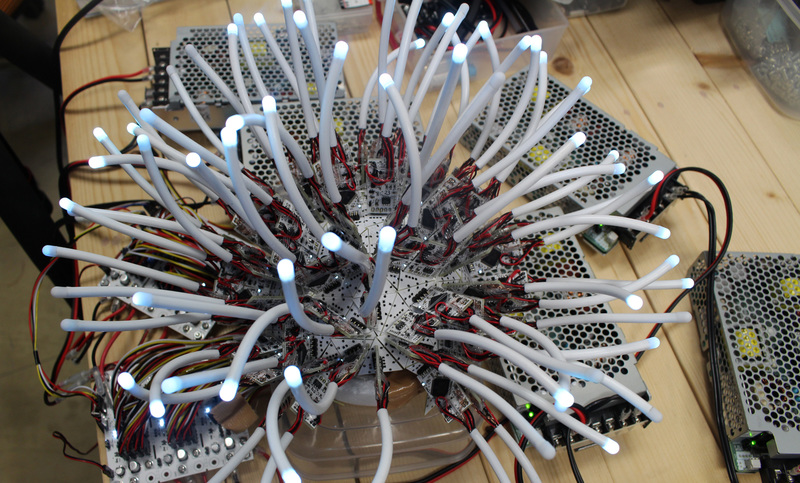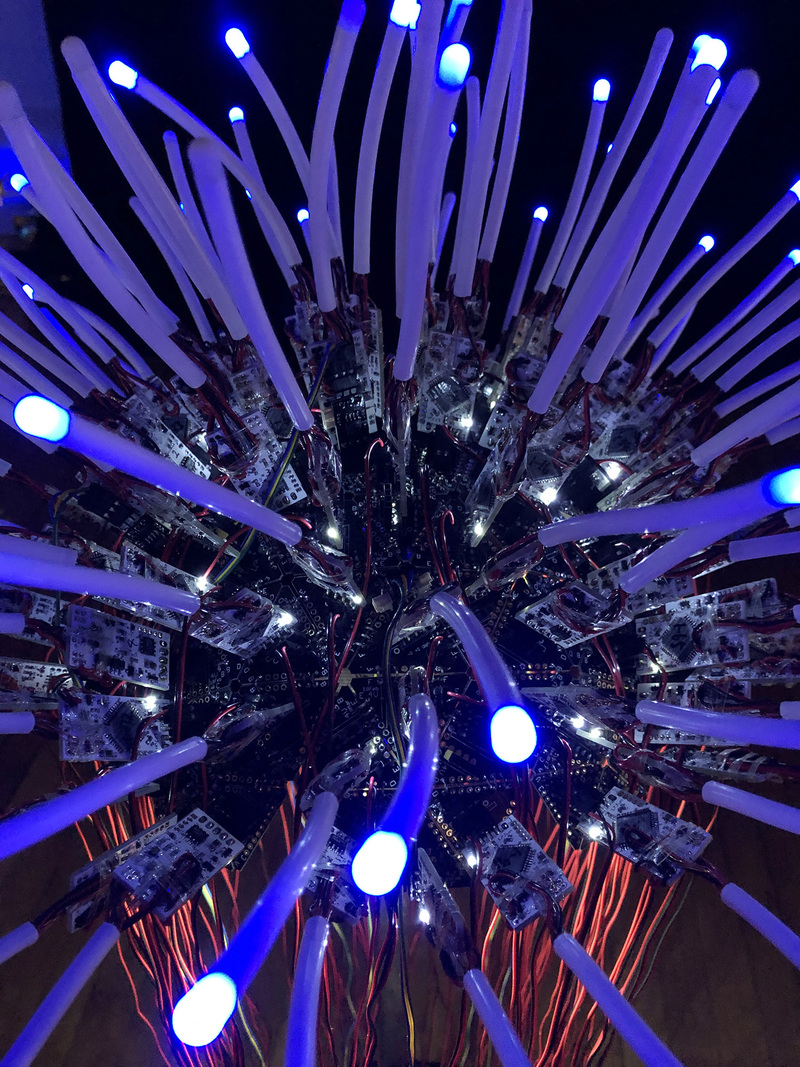Interviews

Capturing the Elegance of Organic Movement Through Animatronics (Part 2)
Akira Nakayasu
The challenge now set forth by Nakayasu and his Uneunewarawara Animatronics was to bring his creations from a 2D plane to a three-dimensional shape.
Interviewer & Japanese Writer: Yamamoto Takaya; Translation & Editing: Matthew Cherry

Akira Nakayasu’s UNEUNEWARAWARA Animatronics, an evolution in the Tentacles series, was selected for the 2016 INNO-vation Program’s Disruptive Challenge.
Tentacles is a work that uses Shape-Memory Alloy Actuators to move around silicone tubes. The silicone tubes in turn squiggle and squirm like sea anemone. The 2016 piece Luminescent Tentacles used 256 of these tubes, but the persisting problem was that they stood on a flat surface, making them less realistic.
Just how could they be replicated to look and behave more like actual sea anemone? Nakayasu’s answer: develop the circuit board itself (on which the control circuits are mounted) to be a three-dimensional structure.
Nakayasu’s previous works used one flat circuit board as a base. Each actuator requires multiple electrical operational cables to function, as well as an LED light to illuminate the tip. If a three-dimensional structure were to be built on top of the flat base, the actuators would need to be connected to both the board and the structure via additional cables, making the connection from the board to the actuators quite complicated. That is why Nakayasu decided to make the board itself three-dimensional, essentially cutting out the technological middleman.
Architect and designer Buckminster Fuller and his Geodesic Dome served as the inspiration for Nakayasu. The dome in question is a three-dimensional sphere made up of dozens of triangles. If Nakayasu could miniaturize the control circuits of his works and set them on triangular bases, they could be aligned to make a hemispherical structure in the same way as the Geodesic Dome.

The board was made into a three-dimensional dome
With this inspiration fresh in his mind, Tentacle Flora was created in 2018. Whereas Luminescent Tentacles had only a single white LED placed on the tip of the silicone tubes, Tentacle Flora saw an upgrade that included multi-color lights. A program to control the color and direction of each individual actuator was also developed. Thanks to these new developments, tentacles truly resembling sea anemone could extend and sway freely from a hemispherical base. Seeing it in action with its multi-color display, one could say it truly replicates a floral bed of mesmerizing tentacles.

2018’s Tentacle Flora
Within the INNO-vation Program’s challenge period, Nakayasu came up with a breakthrough method on how to connect the actuators to the board.
“I wanted to make the actuators stand on their own without using an adhesive like glue. That’s when I had the idea to use tension which makes it look like the actuator is growing out from the base,” Nakayasu explained. With this new method realized, Nakayasu applied for and obtained a patent for his work.
In part 3, we’ll take a look at what keeps Nakayasu motivated to continue creating.
Akira Nakayasu’s Profile

